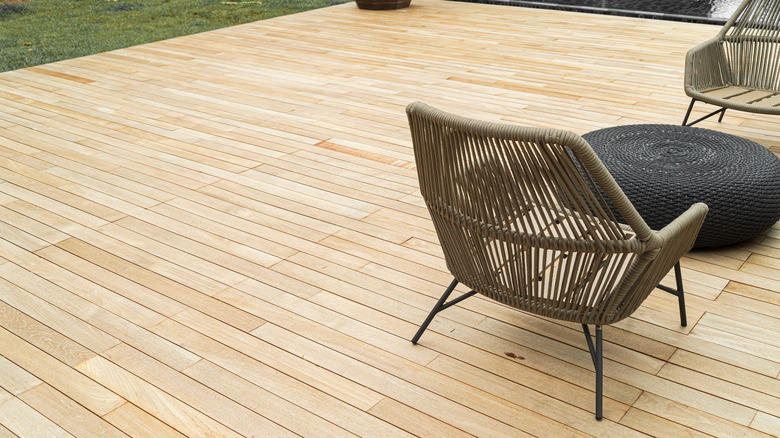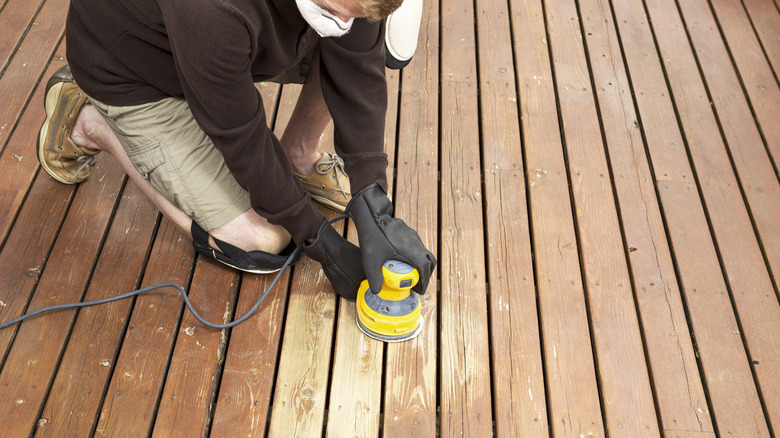The Fastest Fix For A Splintered Wood Deck
There are countless options for decking materials available, depending on what look you prefer and what level of maintenance you want to put in. As Decks.com outlines, there's everything from hardwoods and pressure-treated woods to maintenance-free options like polyvinyl chloride (PVC) or composite decking.
If you've committed to a wooden deck — or, if that's what you happen to have — there's some degree of maintenance required. After all, wood is a natural material that is susceptible to the elements it faces outdoors. Five Star Painting recommends staining your wooden deck every two to three years, and always keeping an eye out for mold or mildew, as well as signs of moisture soaking into the boards.
There's one aspect of maintenance that doesn't adhere to a schedule, however — dealing with one-off issues like splintering. Your deck is constantly exposed to sunshine, rain, and other weather. After enough wear and tear, these have the potential to cause issues like splintering, reports All Counties Fence & Supply. Wood splinters aren't just aesthetically unappealing, they can also create a safety hazard, so you want to fix them as soon as you spot them. Luckily, there's a relatively fast way to repair minor splinters that requires just a few tools and minimal expertise. Read on so you know what to do the next time you spot a splinter on your wooden deck.
How to easily fix a splinter
If a portion of your deck has extremely damaged and even rotted wood, or contains an abundance of splinters within a concentrated area, you may want to consider replacing those boards altogether. However, if you spot a small splinter, there's a quick and easy way to smooth that portion and make it safe to walk on or touch in a short amount of time, because you certainly don't want to be removing those same splinters from yourself or your guests.
As Handyman's World suggests, if the splinter is still intact, you can gently pull up the edge of it, apply some wood glue, and then weight it down to hold it in place while the glue sets. Once the glue is fully dry, finish the job by sanding until it's completely smooth, and it'll soon look as good as new.
If the splinter has become detached, that's still an easy fix with a relatively similar process. As Woodworking Clarity explains, in that case rather than gluing down the existing splinter, you'll want to start by using your chisel to remove any sharp portions on the surface you're repairing to create a base. Then, add epoxy wood filler as needed to fill any gaps in your wooden board. Allow the glue to dry, and, again, sand the surface until it's smooth and looks the way you want it to.

